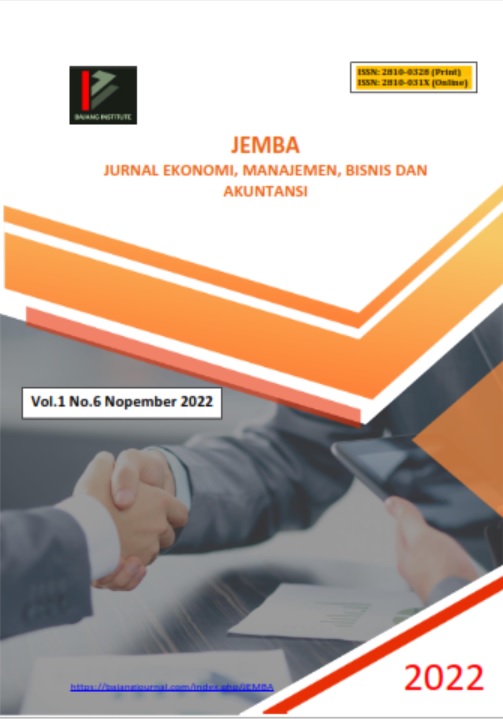ANALISIS USAHA HIDROPONIK MINA TANI FARM MENGGUNAKAN BUSINESS MODEL CANVAS
DOI:
https://doi.org/10.53625/jemba.v1i6.3903Keywords:
Hydroponic; Business Model; SWOT; Business Model Canvas; Development strategy.Abstract
Along with the development of the era, the population in big cities has increased every year. This will certainly have an impact on the narrowing of land, especially agricultural land. In addition, the high demand for vegetables by the community further complicates the situation related to land constriction due to development. By utilizing the limitations of existing land, farming with hydroponic methods can be used as a solution for food security, in this case is the consumption of vegetables and fruits. Vegetable market in this case hydroponic vegetables continue to grow up to 20% each year with key players that can be said is still small. Therefore, it is necessary to formulate a mature strategy to overcome the problems and in the development. Using the Business Model Canvas approach and SWOT analysis can provide a new business model design alternative to face competitors and maximize revenue. This research method uses a qualitative method based on a descriptive purpose that is inductive. Data collection techniques used observations, interviews, and documentation addressed to informants, as well as secondary data. Based on the results of interviews, I obtained a description of nine blocks of the current Canvas Business Model building from Mina Tani Farm Evaluation of SWOT results using SWOT analysis showed that Mina Tani Farm has strengths and weaknesses. In addition, it has many opportunities and some threats that need to be faced. From the evaluation results with SWOT analysis can be prepared alternative strategy formulation as perfection Business Model Canvas existing. The results of this study are to find out the description of the current Mina Tani Farm Hydroponic business model when viewed with the Business Model Canvas approach, to find out the current position of Mina Tani Farm's internal and external environment and to find out the appropriate business development strategy at this time.
References
Fitriansah, T. (2019, Maret). Pertumbuhan Tanaman Selada (Lactuca Sativa L) pada Dosis dan Interval. Jurnal Produksi Tanaman, 7(3), 538-544.
Helaluddin, & Hengki Wijaya. (2019). Analisis Data Kualitatif: Sebuah Tinjauan Teori &Praktik. Makassar.
Meleong, L. J. (2021). Metodologi Penelitian Kualitatif. Bandung: Remaja Rosdakarya.
Miles Matthew B, A. Michael Huberman, & Johnny Saldana. (2014). Qualitative Data Analysis A Methods Sourcebooks Edition 3. Singapore: SAGE Publications.
Mokoginta, R. F. (2021, Januari). Pengaruh Pemberian Pupuk Hayati PGPR (Plant Growth Promoting Rhizobacteria) Terhadap Pertumbuhan Dan Hasil Tanaman Selada. Jurnal Agroteknologi Terapan, 3(1), 43-44.
Nababan, J. R. (2021). Budidaya dan Pasca Panen Selada Merah Lollorosa dengan Sistem Hidroponik di PT Momenta Agrikultura. Agribisnis Hortikultura, 7-8.
Rahayu, V. P. (2022, Februari). Analisis SWOT dan Business Model Canvas (BMC) Sebagai Solusi dalam Menentukan Strategi Pengembangan Usaha Kuliner. international Journal of Community Service Learning, 6, 113-114.
Rijali, A. (2019, Januari). Analisis Data Kualitat. Jurnal Alhadharah, 13, 81-83.
Ujung, G. (2021, Desember ). Business Model Analysis With Business Model Canvas Approach on Kopikir Reborn Bandung. e-Proceeding of Management, 8, 8530.
Utami, E. P. (2021, November). Analisis Usahatani Budidaya Tanaman Selada Kepala Secara Konvensional: Studi. Media Agribisnis, 5(2), 150-161.












